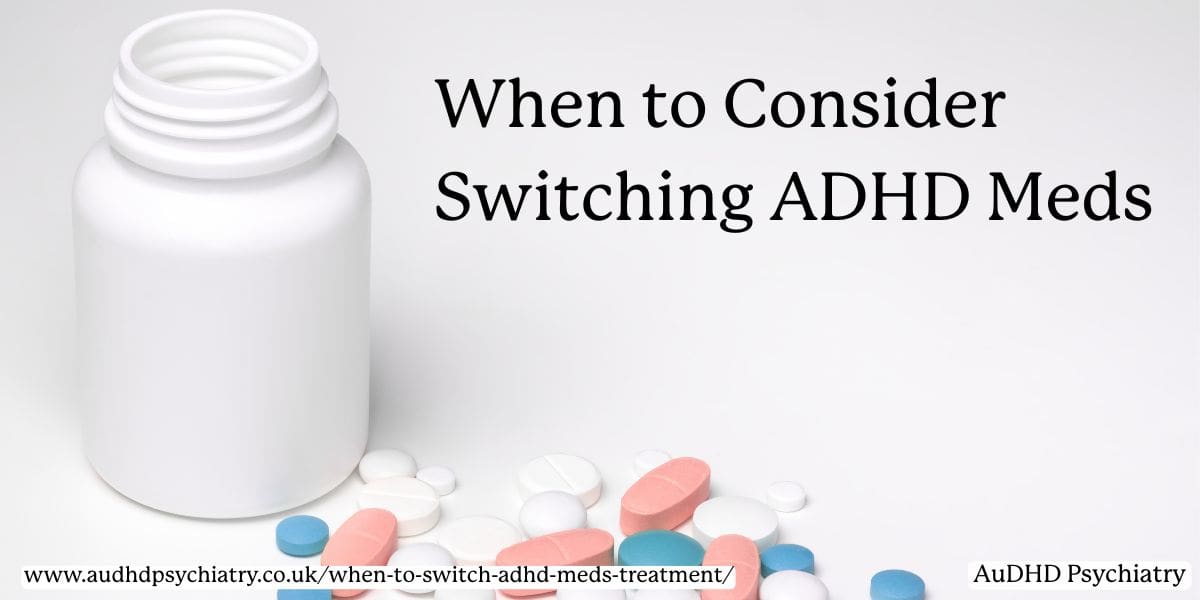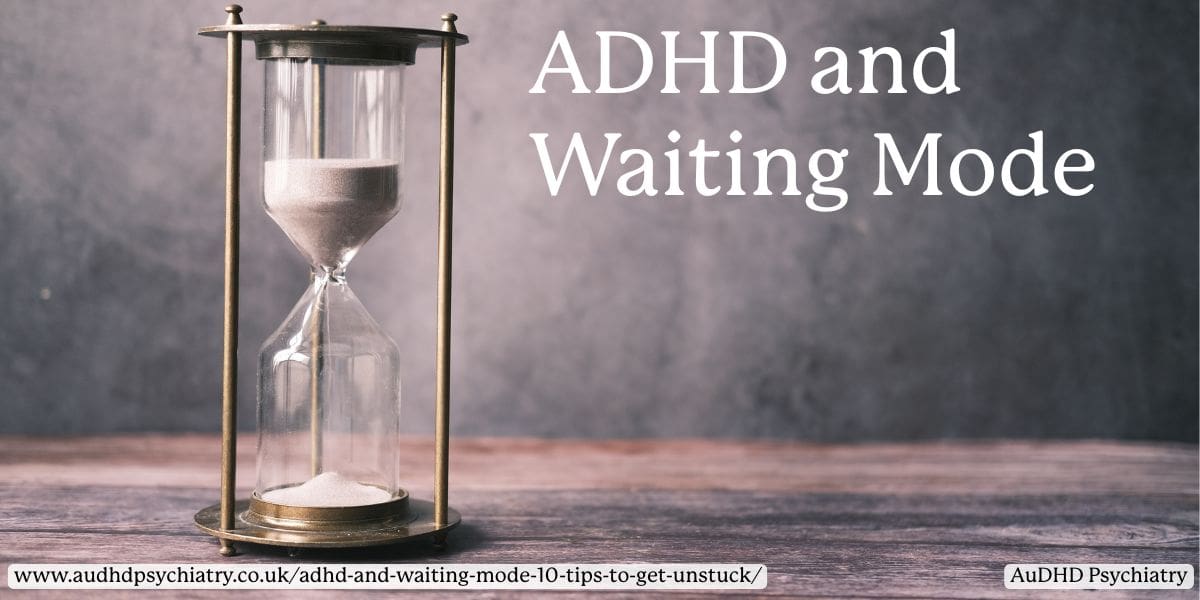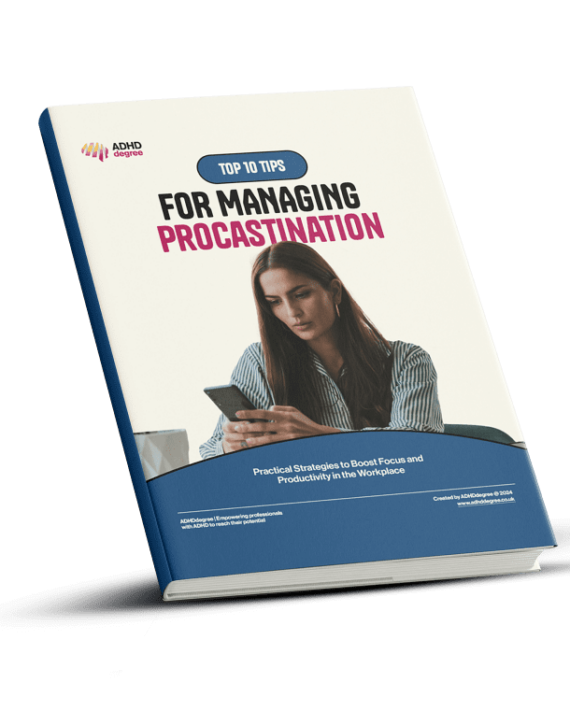When ADHD medication stops working or starts causing more harm than good, it may be time to switch. Knowing when to switch ADHD medication is an important part of long-term treatment. While many individuals respond well to their initial prescription, others may experience side effects, reduced effectiveness, or poor symptom control over time. Recognising when medication is no longer meeting your needs is key to maintaining focus, emotional regulation, and day-to-day functioning.
This article outlines the common signs that it may be time to change ADHD treatment, how long to give medication before considering a switch, and the steps involved in adjusting your dosage or transitioning to a new option. You’ll also find practical advice on preparing for your next consultation and what to expect during and after a medication change.
If you’re managing your own treatment or supporting a child with ADHD, understanding the process of safely reviewing and modifying medication can help ensure long-term success.
Signs It’s Time to Switch ADHD Medication
ADHD medication should improve your quality of life, not add unnecessary stress. If treatment stops working as expected or begins causing day-to-day challenges, it may be time to reassess.
The Medication No Longer Covers Your Full Day
Some medications may stop working too soon, leading to a return of ADHD symptoms in the afternoon or evening. You might notice that focus becomes harder to maintain, or that restlessness and irritability increase as the medication wears off. This may also include emotional rebound effects, where the crash after medication leaves you feeling worse than before.
Ongoing Side Effects Disrupt Daily Life
While side effects are not uncommon in the early stages of treatment, persistent problems such as poor appetite, sleep disruption, or low mood may suggest that the medication is poorly tolerated. If these issues don’t improve over time, or they interfere with your ability to function well at home, work, or school, a medication change may be necessary.
Symptoms Are Poorly Managed Despite Adherence
Even with consistent use, some people continue to experience high levels of impulsivity, disorganisation, or emotional reactivity. This could suggest that the dosage isn’t right or that a different class of medication may work better. If you consistently struggle to meet daily demands despite following your treatment plan, it’s worth reviewing your options with a clinician.
If you’re unsure whether your treatment is still working, our article on managing ADHD medication side effects offers helpful signs to watch for and tips for monitoring response.
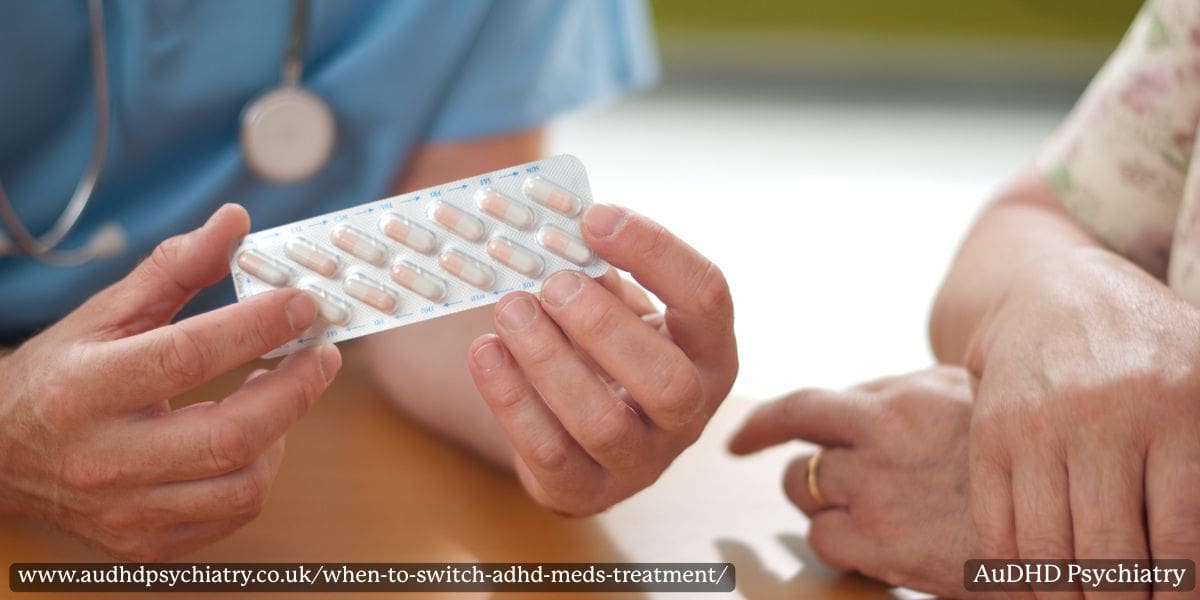
How Long to Try ADHD Medication Before Switching
Before switching ADHD medication, it’s essential to give the current treatment enough time to work. While it’s understandable to seek rapid symptom relief, both stimulant and non-stimulant medications follow clinical timelines that require careful observation.
Titration Is a Key Phase
Most ADHD medications, particularly stimulants like methylphenidate or lisdexamfetamine, begin to show effects within hours. However, that doesn’t mean the initial dose is the right one. A carefully monitored titration process, the gradual adjustment of medication dosage to find the most effective balance, determines the lowest effective dose with the fewest side effects. This adjustment period often takes 2 to 4 weeks and may involve several minor changes to the dose or dosing schedule.
Results take longer for non-stimulant medications such as atomoxetine or guanfacine. These medicines work gradually, often requiring 4 to 6 weeks before their full therapeutic effect is seen.
Monitor Your Response Consistently
Tracking how your body and symptoms respond during this time is crucial. Focus, motivation, appetite, emotional regulation, and sleep quality should all be observed. While it can be tempting to assess progress based solely on attention span, ADHD affects multiple areas of functioning. Maintaining a consistent routine, including regular wake times, meals, and task expectations, helps reduce variables and supports more accurate assessment.
When a Change May Be Justified
If, after a full trial period, your ADHD medication provides limited benefit or causes side effects that impact day-to-day life, it may be time to consider a switch. However, it’s important not to adjust treatment too early, as doing so may interrupt titration or lead to unnecessary disruptions.
When Not to Switch ADHD Medication
It’s natural to feel uncertain when ADHD medication doesn’t seem to be working. However, switching too early or for the wrong reasons can interfere with progress. Some concerns can be managed by adjusting the dose or routine, rather than starting over with a new prescription.
Some Side Effects Are Temporary
Common side effects of ADHD medication, such as reduced appetite, mild irritability, or difficulty sleeping, often resolve within the first two weeks. These are normal during the titration phase and don’t always require a change in treatment. If the symptoms are manageable and improving gradually, your doctor may recommend continuing to monitor rather than switching immediately.
Misinterpreting early side effects can lead to premature changes. Instead, ensure the medication is taken consistently and at the correct time. Changing ADHD treatment without fully evaluating its effect over several weeks may disrupt progress.
External Pressures Can Skew Decision-Making
Sometimes, a teacher, family member, or employer may urge a medication switch due to persistent symptoms. But these decisions should be based on long-term symptom tracking, not single reports. ADHD medication should be evaluated in the context of everyday functioning, not isolated feedback.
Unless the side effects are severe, switching should not be your first step. Instead, work with your prescriber to adjust ADHD dosage, identify timing issues, and determine whether you’re in the early adjustment period, not necessarily a treatment failure.
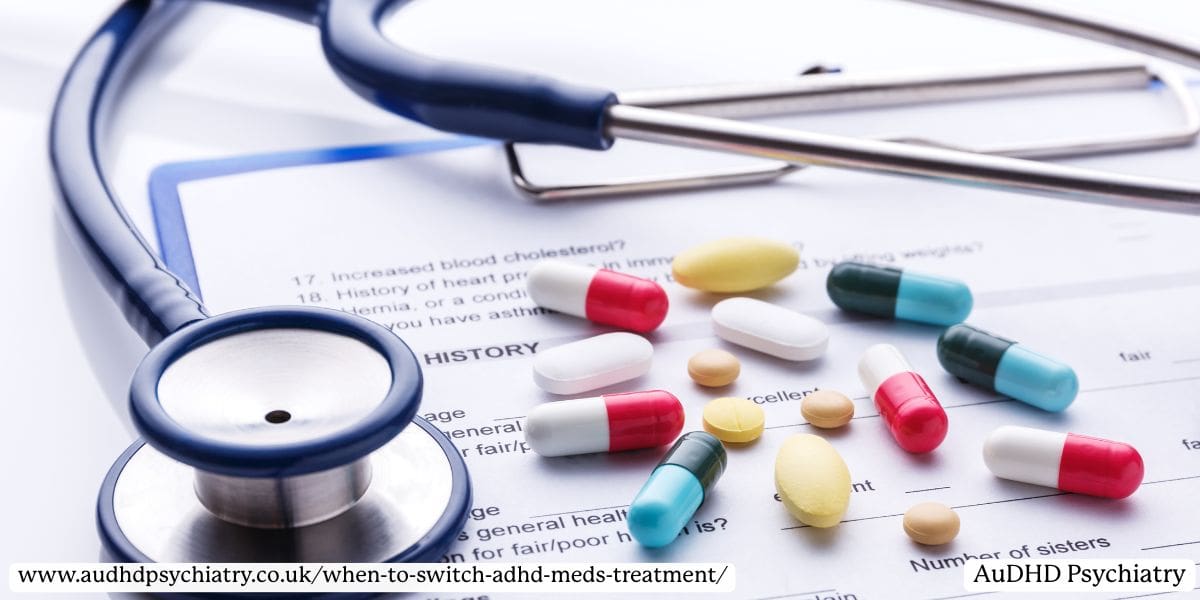
How to Prepare for a Medication Switch
Switching ADHD medication is an important decision about finding the right medication and aligning it with your lifestyle, symptom patterns, and long-term treatment plan. Preparing for this conversation with your healthcare provider will ensure your experience is fully considered.
Log Symptoms and Medication Response
Before requesting a change, start by tracking ADHD symptoms across several days or weeks. Note what time your current prescription medication is taken, when effects begin to wear off, and any unwanted side effects, for example, loss of appetite, emotional crashes, or sleep disturbances.
Be sure to log symptoms like impulsive behaviours, difficulty with executive function, or physical issues like increased heart rate. These details can help your provider distinguish between common side effects and those that require immediate attention or indicate a treatment change.
Tools like journals or ADHD apps, available via our ADHD resources and tools hub, can help you organise this information before your appointment.
Clarify Goals and Ask the Right Questions
Write down what you’d like to improve. Is the current dose too low? Are you hoping to reduce bothersome side effects or explore non-stimulant ADHD medication due to a coexisting mood disorder or substance use disorder?
You can also ask about different medications, such as methylphenidate-based medication or extended-release stimulants that offer more consistent coverage throughout the day, especially if your symptoms return in the evening hours. Inquire about the potential benefits of long-acting medication vs short-acting stimulants, and whether you’re on the right dose for your profile.
Having this information on hand ensures your treatment options are reviewed thoughtfully and that the next step in your ADHD treatment is safe, tailored, and well-informed.
How to Talk to Your Doctor About Changing ADHD Medication
If your ADHD medication isn’t producing the expected benefits, or if you’re experiencing ongoing side effects, it may be time for a structured medication review. Discussing treatment changes with your healthcare provider ensures you’re making informed, clinically guided decisions, especially when switching stimulants or exploring non-stimulant ADHD treatment options.
Explain the Day-to-Day Impact
When meeting your prescriber, be specific about how your symptoms affect your ability to manage tasks, relationships, or emotional regulation. This helps the clinician assess whether the issue lies in medication effectiveness, dosage, or the medication class itself.
If symptoms return before evening or your medication doesn’t last long enough, bring it up. Many long-acting methylphenidate formulations, like Concerta XL, offer extended coverage, while others, like Medikinet XL or Equasym XL, include an immediate-release component for quicker onset.
Outline Your Goals and Questions
Describe what you’re hoping to achieve: improved symptom control, reduced side effects, or better alignment with your daily routine. Ask whether you’re on the lowest dose appropriate, or if you’re a candidate for modified-release methylphenidate.
You may also want to discuss food requirements, onset of action, and duration of action, as these pharmacological factors affect timing and results. This information can be found in methylphenidate SPC summaries or discussed during your ADHD medication consultation.
Explore Non-Medication Options
Finally, ask about behavioural support or ADHD coaching. Combining medication with lifestyle strategies often improves outcomes. By preparing your questions and sharing specific examples, you’ll have a clearer path forward during your ADHD medication review, especially if you’re considering changing ADHD medication or prescribing by brand.
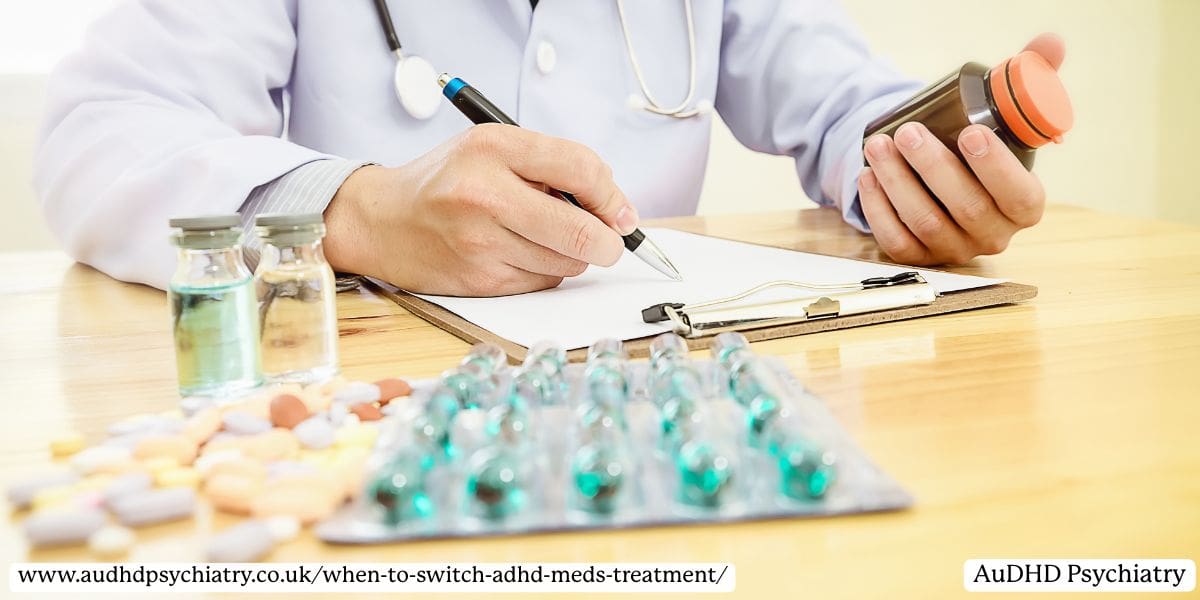
ADHD Medication Alternatives: What to Try Next
When the current treatment isn’t working, exploring ADHD medication alternatives can help restore focus, stability, and day-to-day confidence. Your provider may recommend trying another stimulant, a non-stimulant ADHD med, or even a completely different type of medication based on your history, coexisting conditions, or response to previous options.
Switching Between Stimulants
Stimulants remain the first-line ADHD treatment for most patients. However, responses to different methylphenidate brands in the UK, such as Concerta XL, Xaggitin, or Matoride XL, can vary due to their release profiles. Some contain both immediate-release and extended-release components, which may impact the onset of action, especially in school or work settings.
If you’re currently using Vyvanse (lisdexamfetamine) and considering a switch, ask your provider about switching from Vyvanse to Concerta, and whether bioequivalence is a concern. For comprehensive information on different ADHD meds, you can refer to our Adderall vs Ritalin vs Vyvanse article.
Trying Non-Stimulants or Antidepressants
If stimulants cause bothersome side effects like insomnia or appetite suppression, non-stimulant ADHD medications like atomoxetine or guanfacine may be better tolerated. These are often preferred for people with sleep disorders, substance abuse concerns, or coexisting mood disorders.
In some cases, antidepressants may support symptom management, especially if there’s overlap with anxiety or low motivation. These are considered secondary options and are usually introduced under specialist input. The best stimulant drugs and alternatives differ for each patient. A period of trial and error, guided by your prescriber, helps identify the most effective treatment with the fewest side effects.
What to Expect After Switching ADHD Medication
Switching ADHD medication often brings a sense of hope, but it’s also a time that calls for patience and close observation. Whether you’ve changed your dose, formulation, or moved to a new ADHD medication altogether, the transition phase can involve temporary challenges before benefits appear.
Initial Effects and Adjustment Period
In the first week, some people report mild but noticeable effects such as dry mouth, changes in energy, or sleep disturbances. These are common with both stimulant drugs and non-stimulant medications. Depending on the pharmacokinetic profile of the new treatment — including its onset of action, duration, and release mechanism, symptoms may improve at different rates.
With stimulant ADHD meds, effects are often seen within hours, while non-stimulants may require several weeks. Adults in particular may notice slower adjustments, especially if they’ve switched from a methylphenidate-based medication to an extended-release or dual-release format.
Tracking Progress and Managing Side Effects
Monitoring emotional regulation, focus, appetite, and physical symptoms like increased heart rate or irritability will help determine whether the change offers a potential benefit. Keep a journal or symptom tracker to record any changes in symptom control and unwanted side effects.
To monitor your response effectively, track changes in:
- Attention span and task completion
- Sleep quality and energy levels
- Appetite and digestive patterns
- Mood shifts or increased irritability
- Physical symptoms (e.g., headaches, restlessness, dry mouth)
Trial and error are often part of the process. You may need several dose changes before reaching the most effective treatment, especially if you’re on modified-release medication. It’s important not to interpret every short-term reaction as failure.
Follow-Up and Ongoing Review
A follow-up with your healthcare provider, usually scheduled within 2–4 weeks, allows for necessary adjustments to your medication dosage. This annual review process is a vital part of adult ADHD care. For long-term success, shared decision-making and regular monitoring ensure your treatment plan remains safe and effective.
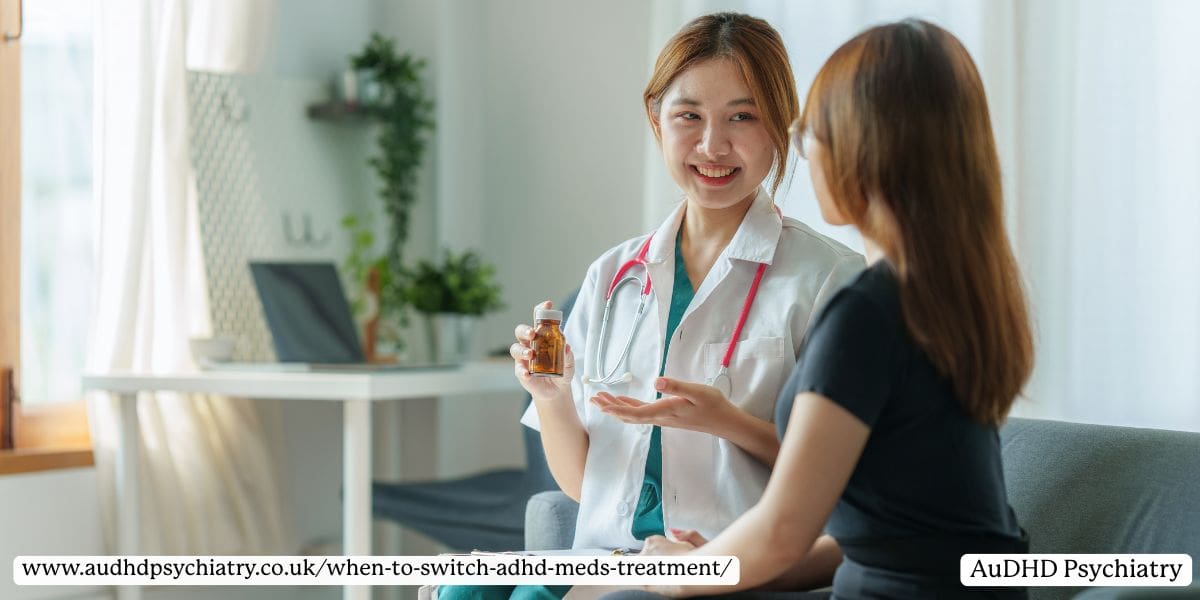
Safety Tips for Switching ADHD Medication
Changing ADHD treatment can improve symptom relief, but it should always be done safely and under professional guidance. ADHD medications affect levels of certain brain chemicals, and sudden changes can trigger withdrawal symptoms, rebound effects, or serious adverse events.
Always Switch Under Clinical Supervision
Whether you’re stopping or reducing your current dose or moving to a different drug class, involve your healthcare provider. Tapering protocols are especially important when transitioning from high doses of stimulant medication, which carry a higher risk of withdrawal if stopped abruptly.
Ask whether your current or new medication has an extended-release or immediate-release component, and whether switching will impact symptom timing. Differences in release profiles, such as with equivalent MR tablets like Concerta XL vs. Matoride XL, can make a significant difference in overall symptom management.
Understand the Risks of Poorly Managed Switches
A poorly timed or unsupported switch may worsen symptoms, create emotional instability, or trigger side effects such as sleep disruption, mood changes, or appetite loss. For patients with coexisting anxiety disorders or bipolar disorder, any medication changes should be monitored even more closely due to increased sensitivity.
Risks of switching medication without supervision may include:
- Worsened rebound symptoms or emotional crashes
- Withdrawal symptoms like fatigue or low mood
- Increased blood pressure or heart rate
- Delayed symptom relief due to formulation mismatch
- Missed detection of adverse interactions with other conditions or medications
In some cases, switching ADHD medication during a supply disruption may require trying a different dose, brand, or formulation. If this applies to your situation, see our guide on how to handle the ADHD medication shortage for current advice and practical alternatives.
Prioritise Ongoing Communication
Inform your prescriber about any unexpected changes or bothersome side effects immediately. Good safety planning includes knowing when to call your doctor and ensuring that you are never left without appropriate medication coverage. A structured, collaborative approach is the best way to avoid unwanted side effects and ensure an effective outcome.
Creating a Personalised ADHD Treatment Plan
ADHD treatment is not static. It should evolve based on how your symptoms present over time, how well your current prescription is working, and what supports you have in place. A truly personalised ADHD treatment plan looks beyond just medicine and considers your lifestyle, environment, and long-term goals.
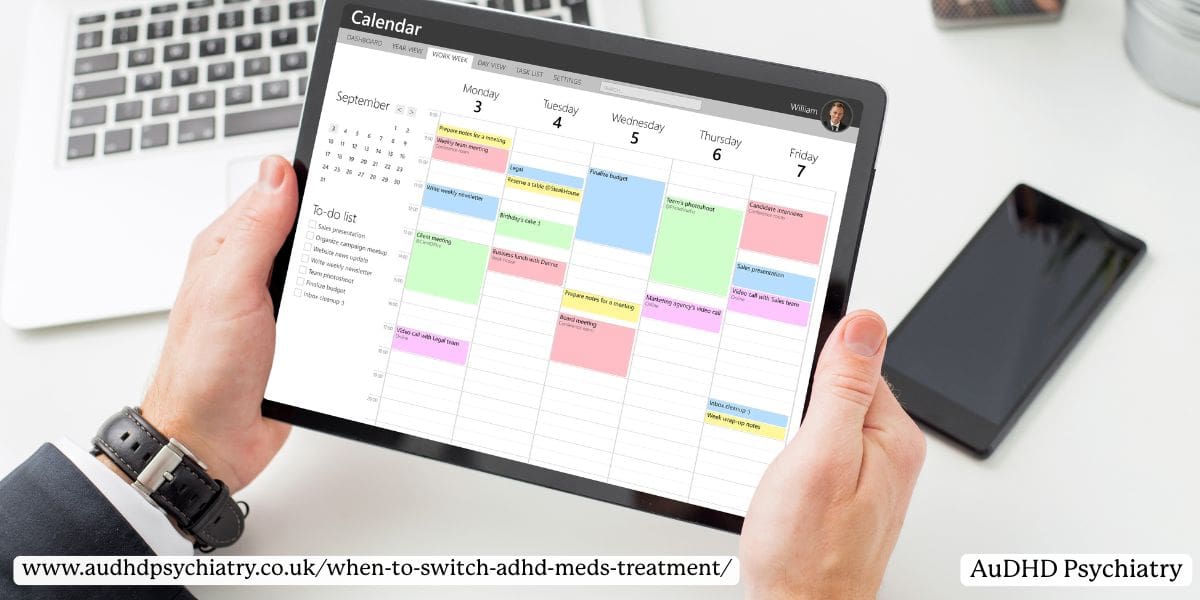
Combine Medication with Practical Supports
ADHD medications like Concerta UK or Ritalin NHS can offer a strong foundation, but combining them with behavioural tools is often the most effective way to manage symptoms. This might include therapy for emotional regulation, coaching for executive function, or structured planners to aid time management. Together, these elements help reduce dependence on high doses and promote sustainable, long-term improvements.
Complementary supports may include:
- Visual routines for task initiation and completion
- Accountability strategies like body doubling or timers
- Apps that help monitor focus, rest, and transitions
Consider Medication Breaks with Caution
Some patients may trial short-term medication breaks to reduce side effects of ADHD medications, like appetite loss or poor sleep. These breaks, often guided by an ADHD medication dosage chart, must be reviewed and approved by a healthcare provider, as inconsistent use can trigger withdrawal symptoms or affect medication effectiveness.
Schedule Regular Reviews
Whether you’re starting a new medication or managing long-term treatment, it’s important to review ADHD meds regularly. This helps ensure you’re still on the lowest dose that works, understand dose changes, and are aware of any new formulations that may offer better results with fewer side effects. Regular reviews also help you reassess lifestyle strategies to ensure your plan is working holistically, not just pharmaceutically.
Conclusion: When to Change ADHD Meds Treatment
Switching ADHD medication is not a failure. It’s a clinical decision made when treatment no longer delivers the desired benefit or begins to cause disruption. Whether you’re adjusting for side effects, poor symptom control, or lifestyle changes, it’s important to approach each change with informed guidance and ongoing review.
With the help of a healthcare professional, you can navigate medication alternatives, assess your response, and determine whether a different type of medication or a new ADHD medication is more appropriate for your needs. Treatment changes are part of finding the right dose, formulation, and schedule, especially when managing complex symptoms across home, school, or work life.
Not sure if your current plan is working? Track your symptoms and speak with a specialist for a review. We’re here to help you find what works best.

